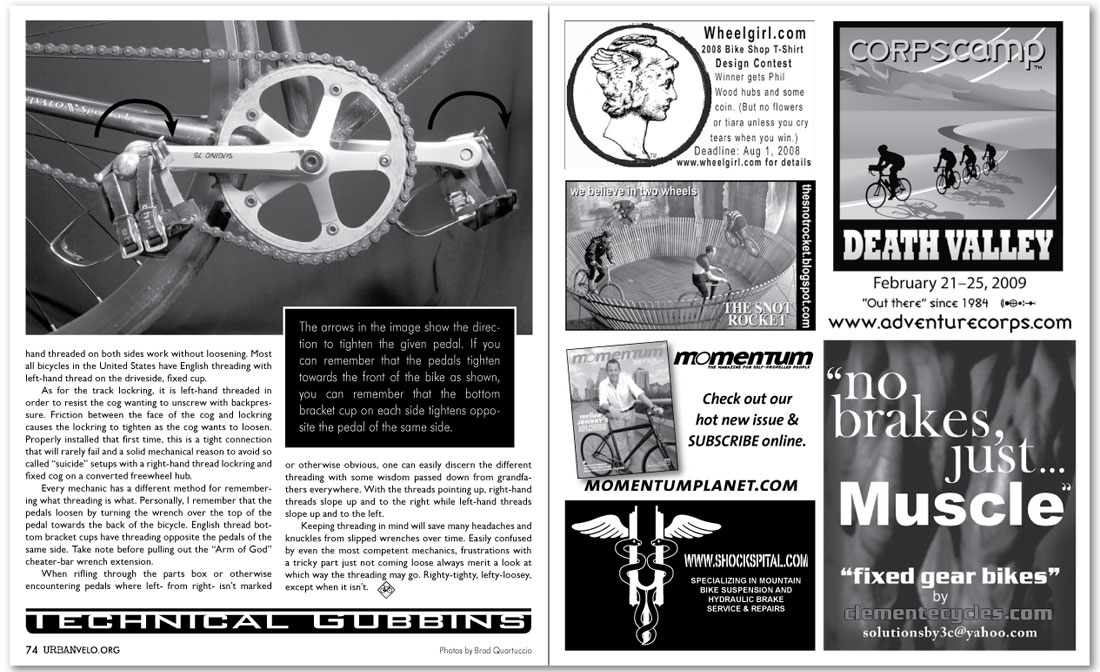| Threading... Continued
hand threaded on both sides work without loosening. Most all bicycles in the United States have English threading with left-hand thread on the driveside, fixed cup.
As for the track lockring, it is left-hand threaded in order to resist the cog wanting to unscrew with backpressure. Friction between the face of the cog and lockring causes the lockring to tighten as the cog wants to loosen. Properly installed that first time, this is a tight connection that will rarely fail and a solid mechanical reason to avoid so called “suicide” setups with a right-hand thread lockring and fixed cog on a converted freewheel hub.
Every mechanic has a different method for remembering what threading is what. Personally, I remember that the pedals loosen by turning the wrench over the top of the pedal towards the back of the bicycle. English thread bottom bracket cups have threading opposite the pedals of the same side. Take note before pulling out the “Arm of God” cheater-bar wrench extension.
When rifling through the parts box or otherwise encountering pedals where left- from right- isn’t marked or otherwise obvious, one can easily discern the different threading with some wisdom passed down from grandfathers everywhere. With the threads pointing up, right-hand threads slope up and to the right while left-hand threads slope up and to the left.
Keeping threading in mind will save many headaches and knuckles from slipped wrenches over time. Easily confused by even the most competent mechanics, frustrations with a tricky part just not coming loose always merit a look at which way the threading may go. Righty-tighty, lefty-loosey, except when it isn’t.
For more tech info visit www.urbanvelo.org/tech |
|
The arrows in the image show the direction to tighten the given pedal. If you can remember that the pedals tighten
towards the front of the bike as shown, you can remember that the bottom bracket cup on each side tightens opposite the pedal of the same side. |
|
|

